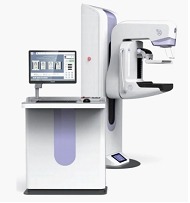X-ray exposure is an essential concept in medical imaging, impacting both the quality of diagnostic images and patient safety. This article dives into everything you need to know about x-ray exposure units, presenting the information in a dynamic, reader-friendly format.
1. Understanding X-Ray Exposure Units
X-ray exposure measures the ionization of air caused by X-rays, commonly expressed in units such as Roentgen (R), rad, and rem. These units are critical for assessing radiation levels during imaging procedures.
| Unit | Definition | Application |
|---|---|---|
| Roentgen (R) | Measures exposure from X-rays or gamma rays in air | Radiation levels in air |
| Rad | Absorbed dose of radiation in a specific material | Quantifying dose in tissues |
| Rem | Accounts for radiation type and biological effects | Occupational exposure for radiologists |
📌 Did you know? Modern digital systems often replace older units with Sievert (Sv) for consistency in global standards.
2. How X-Ray Exposure is Measured
Accurate measurement ensures patient and staff safety. Common devices include:
- Ionization chambers: Measure ionized air particles.
- Dosimeters: Worn by technicians to track cumulative exposure.
Chinacare Medical provides quality-assured dosimeters to ensure healthcare providers work within safety limits.
→Click here to learn more about our dosimeter
3. Factors Influencing X-Ray Exposure Levels
Understanding these factors can significantly reduce unnecessary exposure:
- Duration: Longer exposure leads to higher radiation.
- Distance: Doubling the distance from the source reduces exposure by 75% (Inverse Square Law).
- Shielding: Lead aprons and walls effectively block X-rays.
| Factor | Impact on Exposure | Example |
|---|---|---|
| Time | Directly proportional to dose | Prolonged CT scan = higher dose |
| Distance | Inversely proportional (Inverse Square Law) | Standing 2m away = safer than 1m |
| Shielding | Reduces exposure based on material thickness | 0.5mm lead apron blocks 95% of scatter |
Learn more about Xray Accessories
4. Health Implications of X-Ray Exposure
X-ray exposure has benefits and risks:
- Short-term effects: Skin reddening, minor burns (rare in diagnostic imaging).
- Long-term risks: Increased cancer risk with excessive or repeated exposure.
Data Snapshot: Safe Exposure Levels
According to the World Health Organization (WHO), annual radiation exposure should not exceed 20 mSv for occupational workers and 1 mSv for the general public.
5. Reducing X-Ray Exposure in Medical Settings
Medical facilities can implement these strategies:
- Use low-dose imaging systems, which optimize safety without compromising image quality.
- Educate patients about safety protocols.
- Conduct regular equipment maintenance to prevent unnecessary radiation leaks.
6. X-Ray Exposure in Daily Life
Radiation exposure isn’t limited to hospitals. Everyday sources include:
- Airport scanners: Minimal exposure (<0.01 mSv per scan).
- Natural background radiation: From soil, cosmic rays (~2.4 mSv annually).
| Source | Typical Dose (mSv) |
|---|---|
| Chest X-ray | 0.1 |
| Mammogram | 0.4 |
| CT Scan (Abdomen) | 8.0 |
| Natural Background (Year) | 2.4 |
7. Advancements in X-Ray Technology
Modern innovations aim to reduce radiation risks:
- Digital radiography: Requires significantly less radiation than traditional systems.
- AI-powered imaging systems: Enhance image quality while minimizing repeat scans.
Chinacare Medical leads the way in providing advanced X-ray units that meet global safety standards.
→Click here to learn more about our x-ray unit
8. Frequently Asked Questions About X-Ray Exposure
Q: Are dental X-rays safe for children?
Yes, when performed with modern low-dose equipment. Protective aprons further minimize exposure.
Q: Can frequent imaging harm my health?
While imaging has risks, modern practices prioritize reducing cumulative exposure. Discuss any concerns with your radiologist.
Q: What’s the safest imaging method?
Ultrasound and MRI use no ionizing radiation, making them the safest, though X-rays remain essential for certain diagnoses.
Have questions? We offer free consultation.
Conclusion
Understanding and managing X-ray exposure is vital for patient safety and optimal imaging outcomes. By investing in advanced, low-dose technology, medical professionals can uphold the highest safety standards while delivering exceptional care.
🚀 Take Action Today: Explore Chinacare Medical’s innovative X-ray solutions to ensure safety and precision in your medical imaging practice.
By keeping patients informed, using cutting-edge equipment, and adhering to global safety standards, we can harness the benefits of X-rays while minimizing their risks.
→Click here to learn more about our Xray machine
or

